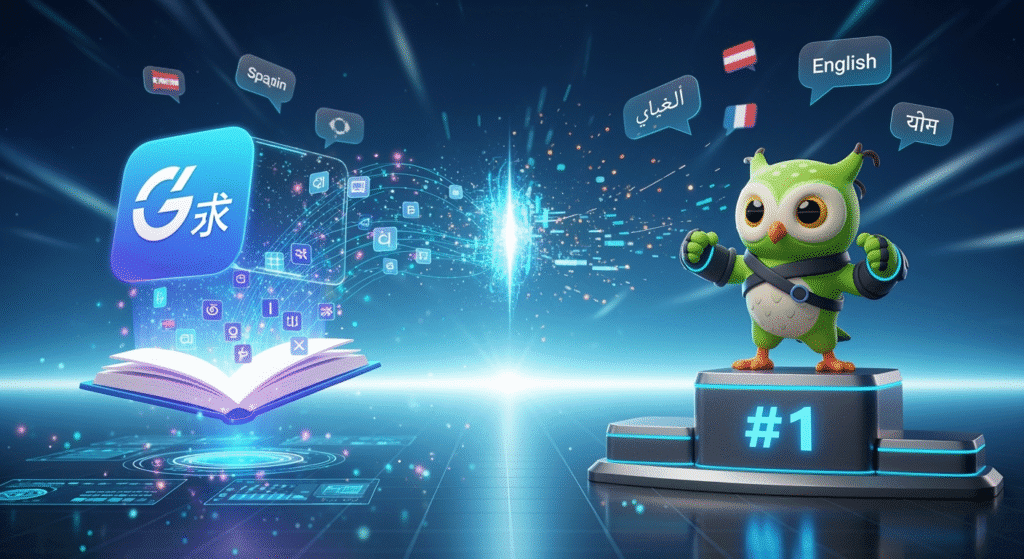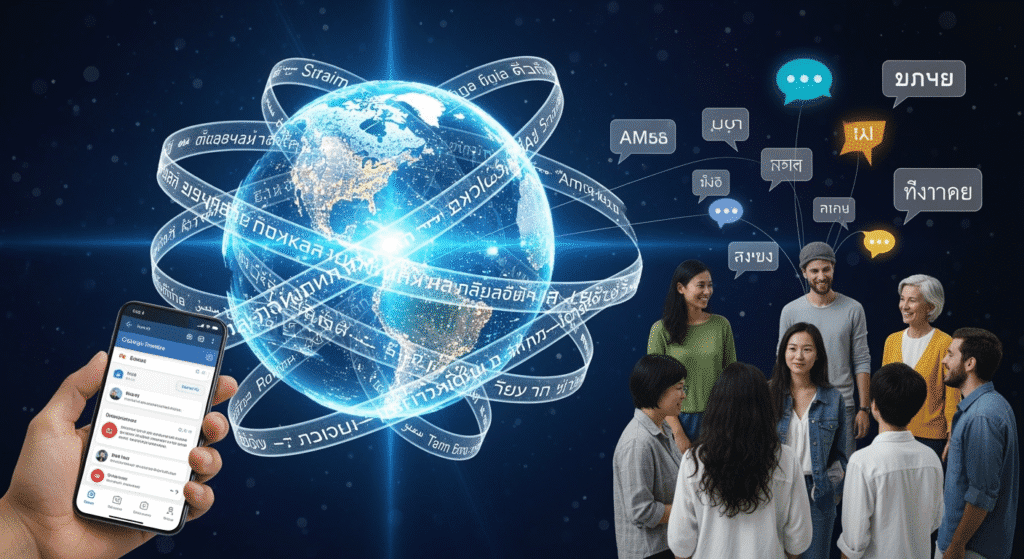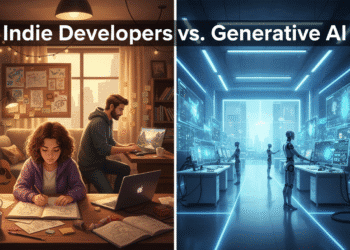The Search Giant’s Bold Move into Educational Territory Signals Major Shift in Language Learning Landscape

Google has officially entered the language learning battlefield. The tech giant announced this week that it’s rolling out revolutionary AI-powered features in its Google Translate app that directly challenge Duolingo’s dominance in the language education space. This strategic move transforms what was once a simple translation tool into a comprehensive language learning platform.
The announcement, made on Tuesday, August 26, 2025, represents Google’s most aggressive push into educational technology to date. By leveraging its advanced Gemini AI models, the company is betting that personalized, AI-driven language instruction can disrupt the established order in an industry worth billions of dollars.
The Practice Revolution: AI Meets Language Learning
At the heart of Google’s new offering lies the “Practice” feature. This isn’t just another language app trying to gamify learning. Instead, it’s a sophisticated AI system that creates customized lessons based on individual skill levels and specific learning goals.
When users tap the new Practice button in the Google Translate app, they’re greeted with a personalized experience that feels more like having a private tutor than using a generic language app. The system asks users to select their current skill level and describe their goals for learning the language.
“These exercises track your daily progress and help you build the skills you need to communicate in another language with confidence,” explained Matt Sheets, a product manager at Google, during a press briefing.
The AI doesn’t just throw random vocabulary at users. If someone indicates they have intermediate Spanish skills and wants to communicate with a host family while studying abroad, Google Translate might create a specific scenario about meal times. This contextual approach represents a significant departure from traditional language learning methods.
Beyond Translation: Real-Time Conversation Capabilities
Google isn’t stopping at language lessons. The company has simultaneously launched a live translation feature that enables real-time conversations between people speaking different languages. This feature works across more than 70 languages, including Arabic, French, Hindi, Korean, Spanish, and Tamil.
The live translation capability uses Google’s advanced voice and speech recognition models to isolate sounds, making it functional even in noisy environments like busy restaurants or crowded airports. The system can identify conversational pauses, accents, and intonations to create natural-sounding conversations.
Unlike the live translation feature on Google Pixel devices, the Google Translate app doesn’t attempt to replicate users’ voices. However, Google representatives indicated they’re “experimenting with different options” in this area, suggesting future enhancements may include voice matching capabilities.
Limited Launch, Unlimited Ambition
Currently, the Practice feature supports a limited language combination. English speakers can practice Spanish and French, while Spanish, French, and Portuguese speakers can practice English. This selective rollout appears strategic, focusing on the most popular language pairs to maximize initial impact.
The live translation capabilities are available to users in the United States, India, and Mexico, representing a significant portion of Google’s global user base. This geographic limitation suggests Google is taking a measured approach to ensure quality before expanding worldwide.
The Duolingo Challenge: David Meets Goliath
Duolingo has dominated the language learning space for over a decade with its gamified approach and distinctive green owl mascot. The company has built a loyal user base through daily streaks, achievement badges, and social features that make language learning feel like playing a game.
Google’s approach differs significantly. Rather than relying on gamification, the tech giant is betting on AI personalization and practical application. The focus appears to be on real-world communication skills rather than maintaining learning streaks or collecting virtual rewards.
This philosophical difference could prove crucial in determining which approach resonates more with learners. While Duolingo has successfully motivated millions through game-like mechanics, Google’s emphasis on practical conversation skills might appeal to users seeking immediate real-world application.
Technical Innovation Behind the Scenes

The new features represent significant advances in AI and machine learning technology. Google’s Gemini models power the personalized lesson generation, while advanced speech recognition enables the live translation capabilities.
“These updates are made possible by advancements in AI and machine learning,” Google stated in its blog post. “As we continue to push the boundaries of language processing and understanding, we are able to serve a wider range of languages and improve the quality and speed of translations.”
The company processes approximately one trillion words across Translate, Search, Lens, and Circle to Search, providing a massive dataset for training and improving its AI models. This scale advantage could prove decisive in the competition with smaller language learning companies.
Market Implications and Industry Response
Google’s entry into language learning sends shockwaves through the educational technology sector. Duolingo’s stock price and market position face new pressure from a competitor with virtually unlimited resources and an existing user base of billions.
The timing appears strategic. As AI technology matures and becomes more accessible, traditional language learning methods face increasing scrutiny. Users increasingly expect personalized, adaptive experiences rather than one-size-fits-all approaches.
Industry analysts suggest this move represents part of Google’s broader strategy to integrate AI across all its services. By enhancing Google Translate with educational features, the company creates additional value for existing users while potentially attracting new ones.
User Experience and Accessibility
Early reports suggest Google’s implementation prioritizes ease of use. The Practice feature integrates seamlessly into the existing Google Translate interface, requiring no separate app downloads or account creation for basic functionality.
Users can choose between listening to conversations and identifying words they recognize, or actively practicing speaking about specific topics. This flexibility accommodates different learning styles and preferences, potentially broadening the appeal beyond traditional language learning app users.
The live translation feature operates through simple voice commands, making it accessible to users regardless of technical expertise. This simplicity could prove crucial in competing with established players who have spent years refining user experience.
Privacy and Data Considerations
Google’s expansion into language learning raises important questions about data privacy and user information. The company’s business model relies heavily on data collection and analysis, which could extend to language learning patterns and personal communication preferences.
Users engaging with the Practice feature provide Google with detailed information about their learning goals, skill levels, and progress patterns. This data could prove valuable for improving AI models while also raising concerns about privacy and data usage.
The live translation feature processes real-time conversations, potentially creating additional privacy considerations for users discussing sensitive topics or personal information.
Future Developments and Expansion Plans
Google’s initial rollout appears designed to test market response and gather user feedback before broader expansion. The limited language combinations and geographic availability suggest a cautious approach despite the company’s significant resources.
Future developments likely include expanded language support, additional geographic markets, and enhanced AI capabilities. Google’s research and development resources position the company to rapidly iterate and improve based on user feedback and competitive pressures.
The integration with other Google services presents additional opportunities. Potential connections with Google Assistant, YouTube, and other platforms could create a comprehensive language learning ecosystem that extends far beyond traditional app boundaries.
Competitive Landscape Evolution
Google’s entry transforms the competitive landscape for language learning applications. Established players like Duolingo, Babbel, and Rosetta Stone now face competition from one of the world’s largest technology companies.
This development could accelerate innovation across the industry as competitors respond to Google’s AI-powered approach. Traditional language learning companies may need to enhance their own AI capabilities or find alternative differentiation strategies.
The competition ultimately benefits language learners, who gain access to more sophisticated tools and approaches. The pressure to innovate could lead to breakthrough developments in language education technology.
Conclusion: A New Chapter in Language Learning

Google’s transformation of its Translate app into a language learning platform represents more than a product update. It signals a fundamental shift in how technology companies approach education and skill development.
The success of this initiative will depend on execution, user adoption, and the ability to deliver meaningful learning outcomes. While Google brings significant advantages in AI technology and user reach, established players have deep expertise in language pedagogy and user motivation.
As this competition unfolds, language learners worldwide stand to benefit from increased innovation, improved tools, and more personalized learning experiences. The battle between Google and Duolingo has only just begun, but the implications extend far beyond these two companies to the future of AI-powered education itself.
The integration of advanced AI into language learning represents a glimpse into the future of education technology. As these tools become more sophisticated and accessible, they have the potential to democratize language learning and break down communication barriers worldwide.
Sources
- The Verge – Google is building a Duolingo rival into the Translate app
- Beebom – Google Translate Adds AI-Powered Learning Features to Rival Duolingo
- TechCrunch – Google Translate takes on Duolingo with new language learning tools
- Business Standard – Google Translate picks features from Duolingo to become your language coach
- Mezha Media – Google turns Translate into Duolingo









